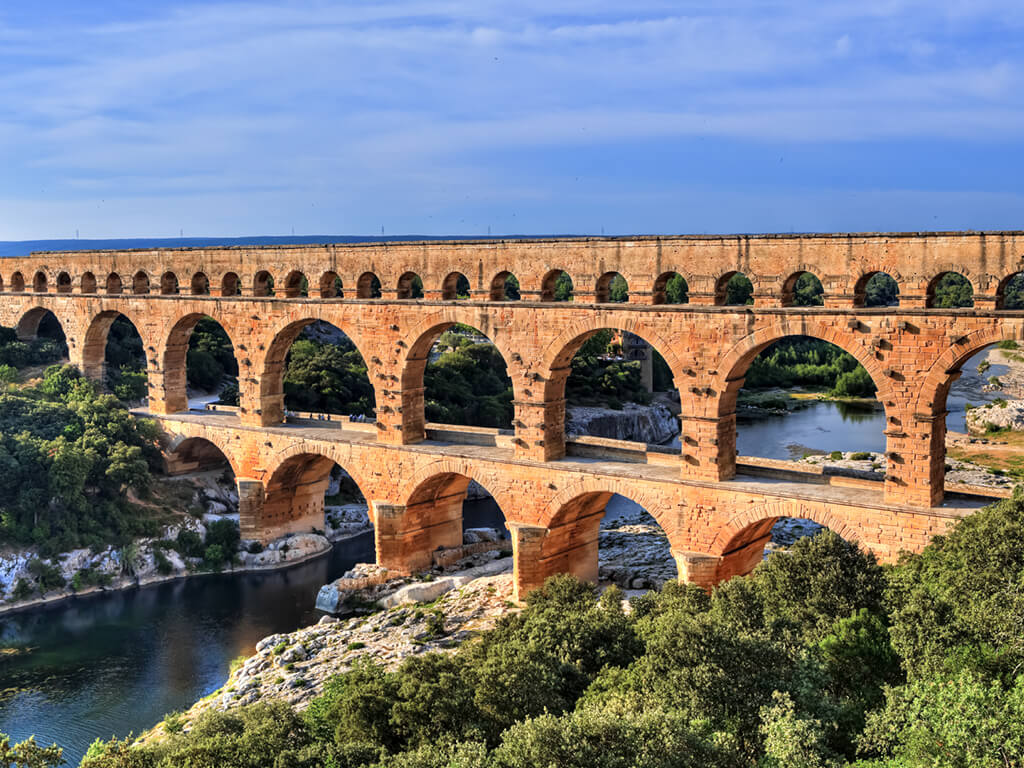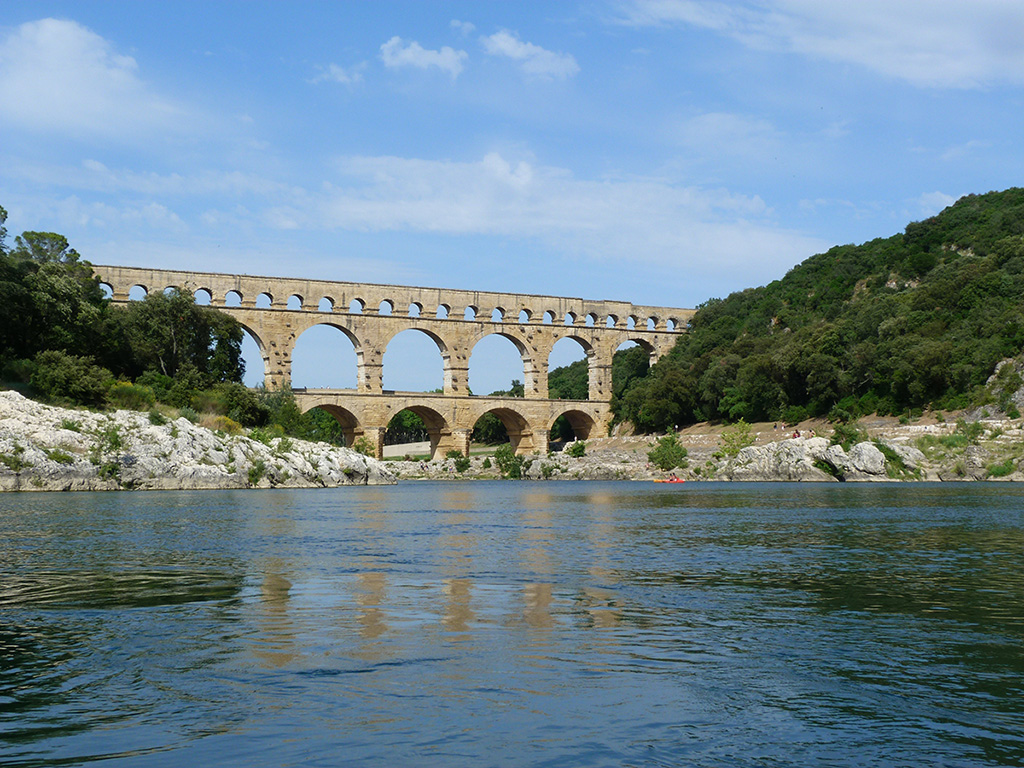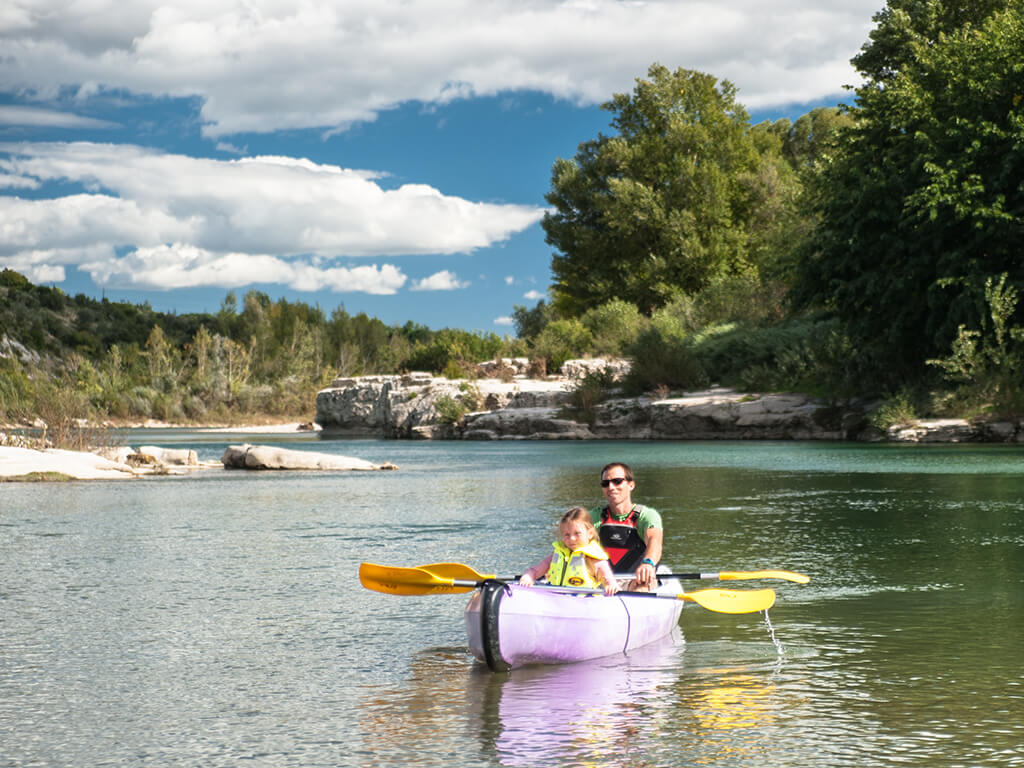Le pont du Gard
The Pont du Gard
Emblem of the Roman monuments
about 1 hour from Cavaillon
Since 1985, the Pont du Gard is listed as a World Heritage Site by UNESCO. In 2004, the 165 hectares of greenery and sensitive natural areas of the Pont du Gard site have led it to be listed as "Great French Site".
The site is also part of the area "Natura 2000 Gardon gorges", especially for its animal species (beaver, avifauna...) and its plants species (Judas tree), some of which are protected.
A bit of history
The Pont du Gard is the largest, and best preserved Roman aqueduct bridges. Its construction started most likely in the middle of the first century AD, under the reign of Emperor Claudius and ended most likely in Trajan in the 1960s. Today, we estimate the construction of the whole aqueduct to have lasted 15 years.
The Pont du Gard is only the most impressive piece of a huge aqueduct that is 50 km long, stretching from Uzès to Nîmes. During the 4th century, the lack of maintenance greatly damaged this place, which ended up being abandoned. The Middle Ages brought life back to the Pont du Gard by granting it a new role : it became a crossing point.
The gorges of Gardon
During your visit in the Pont du Gard, you will walk on top of the monument along the aqueduct's pipeline, and from there, enjoy a panorama of small valleys crossed by the river, and few cliffs, announcing the proximity with the Gorges of Gardon.
The bridge is 48 meters high, with a triple row of superimposed arches, and its length reaches up to 273 meters in the upper part.
The Pont du Gard architecture is far from being the only attraction of the site and its surroundings. The developed beaches nearby will also bring pleasure to the tourists during the high season.




